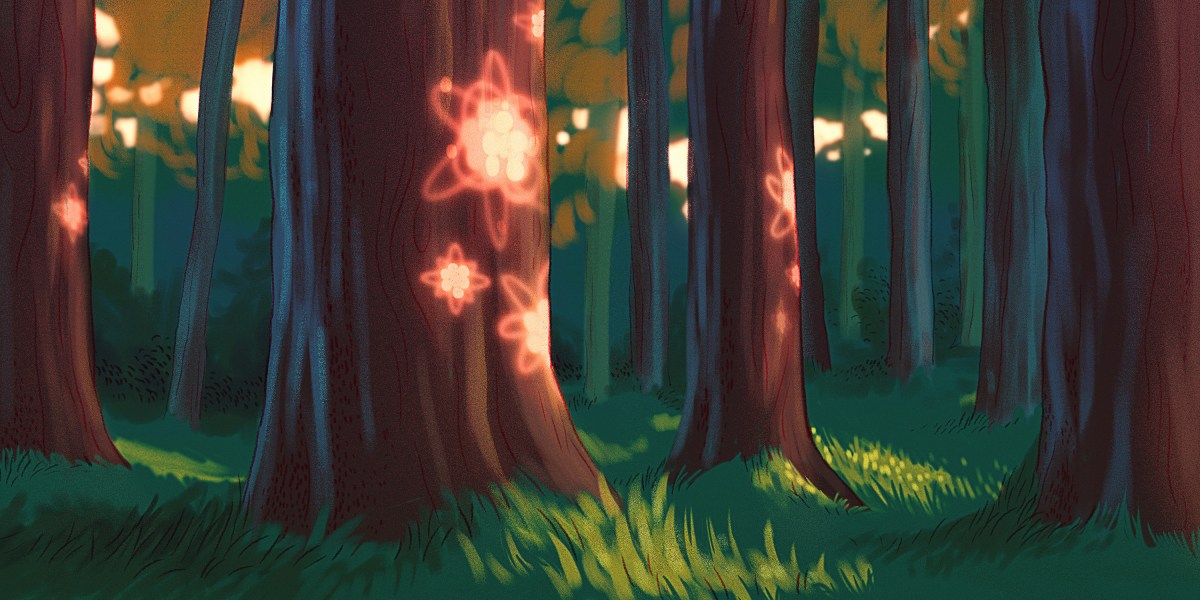Inside the quest to engineer climate-saving “super trees”

Since neither Mellor nor Hall had substantial experience with genetic transformation, they enlisted outside scientists to do some of the early work. The company focused on replicating Ort’s enhanced-photosynthesis pathway in trees, targeting two species: poplars, which are popular with researchers because of their well-studied genome, and loblolly pines, a common timber species. By 2020, the tweaked trees had been planted in a grow room, a converted recording studio in San Francisco. The enhanced poplars quickly showed results even more promising than Ort’s tobacco plants. In early 2022, Living Carbon’s team posted a paper on the preprint server bioRxiv claiming that the best-performing tree showed 53% more above-ground biomass than controls after five months. (A peer-reviewed version of the paper appeared in the journal Forests in April.)
Through the loophole
Plant genetics research can be a long scientific slog. What works in a greenhouse, where conditions can be carefully controlled, may not work as well in outdoor settings, where the amounts of light and nutrients a plant receives vary. The standard next step after a successful greenhouse result is a field trial, which allows scientists to observe how genetically engineered (GE) plants might fare outside without actually setting them fully loose.
US Department of Agriculture (USDA) regulations for GE field trials aim to minimize “gene drift,” in which the novel genes might spread into the wild. Permits require that biotech trees be planted far from species with which they could potentially reproduce, and in some cases the rules dictate that any flowers be removed. Researchers must check the field site after the study to ensure no trace of the GE plants remain.
Before planting trees in Georgia, Living Carbon launched its own field trials. The company hired Oregon State’s Strauss, who had given Living Carbon the poplar clone it had used in its gene transfer experiments. In the summer of 2021, Strauss planted the redesigned trees in a section of the university’s property in Oregon.
Strauss has been conducting such field trials for decades, often for commercial companies trying to create better timber technologies. It’s a process that requires patience, he says: most companies want to wait until a “half rotation,” or midway to harvest age, before determining whether a field trial’s results are promising enough to move forward with a commercial planting. Living Carbon’s trees may never be harvested, which makes setting a cutoff date difficult. But when we spoke in February, less than two years into the field trial and just before Living Carbon’s initial planting, Strauss said it was too early to determine whether the company’s trees would perform as they had in the greenhouse. “There could be a negative,” he said. “We don’t know.”
Strauss has been critical of the US regulatory requirements for field trials, which he sees as costly, a barrier that scares off many academics. The framework behind its rules emerged in the 1980s when, rather than wait on the slow grind of the legislative process, the Reagan administration adapted existing laws to fit new genetic technologies. For the USDA, the chosen tool was its broad authority over “plant pests,” a term meant to describe anything that might injure a plant—whether an overly hungry animal, a parasitic bacterium, or a weed that might outcompete a crop.
At the time, gene transfer in plants was almost entirely accomplished with the help of Agrobacterium tumefaciens. This microbe attacks plants by inserting its own genes, much like a virus. But scientists found they could convince the bacterium to deliver whatever snippets of code they desired. Since Agrobacterium itself is considered a plant pest, the USDA decided it had the authority to regulate the interstate movement and environmental release of any plant that had had its genes transformed by the microbe. This meant nearly comprehensive regulation of GE plants.
In 1987, just one year after the USDA established its policy, a team of Cornell researchers announced the successful use of what’s become known as a “gene gun”—or, less colorfully, “biolistics”—in which bits of DNA are literally blasted into a plant cell, carried by high-velocity particles. No plant pest was involved. This created a loophole in the system, a way to produce GE plants that the current laws did not cover.






